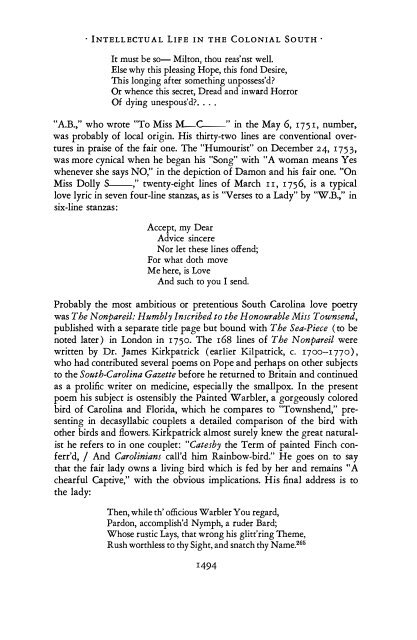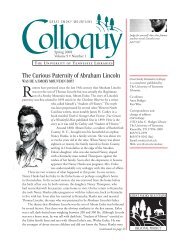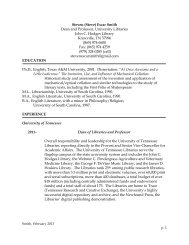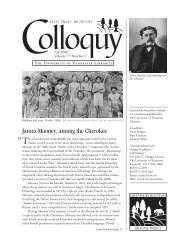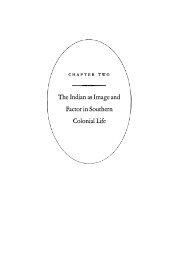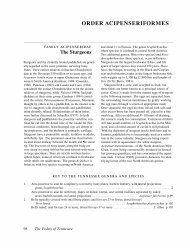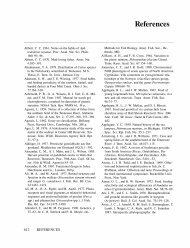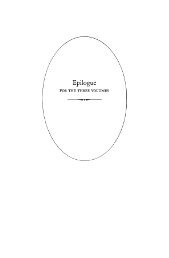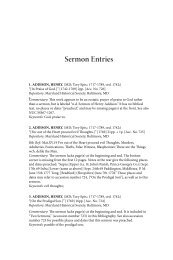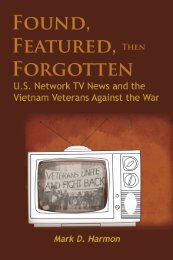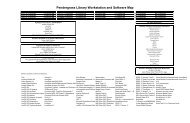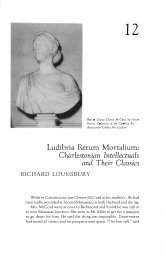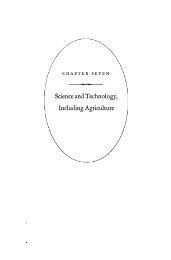Literature, Principally Belletristic - University of Tennessee, Knoxville
Literature, Principally Belletristic - University of Tennessee, Knoxville
Literature, Principally Belletristic - University of Tennessee, Knoxville
You also want an ePaper? Increase the reach of your titles
YUMPU automatically turns print PDFs into web optimized ePapers that Google loves.
· INTELLECTUAL LIFE IN THE COLONIAL SOUTH '<br />
It must be so-- Milton, thou reas' nst well.<br />
Else why this pleasing Hope, this fond Desire,<br />
This longing after something unpossess'd?<br />
Or whence this secret, Dread and inward Horror<br />
Of dying unespous'd? ...<br />
"A.B.," who wrote "To Miss M-C--" in the May 6, I75I, number,<br />
was probably <strong>of</strong> local origin. His thirty-two lines are conventional over<br />
tures in praise <strong>of</strong> the fair one. The "Humourist" on December 24, 1753,<br />
was more cynical when he began his "Song" with "A woman means Yes<br />
whenever she says NO," in the depiction <strong>of</strong> Damon and his fair one. HOn<br />
Miss Dolly S-," twenty-eight lines <strong>of</strong> March I I, 1756, is a typical<br />
love lyric in seven four-line stanzas, as is "Verses to a Lady" by "W.B.," in<br />
six-line stanzas :<br />
Accept, my Dear<br />
Advice sincere<br />
Nor let these lines <strong>of</strong>fend;<br />
For what doth move<br />
Me here, is Love<br />
And such to you I send.<br />
Probably the most ambitious or pretentious South Carolina love poetry<br />
was The Nonpareil: Humbly Inscribed to the Honourable Miss Townsend,<br />
published with a separate title page but bound with The Sea-Piece (to be<br />
noted later ) in London in I750. The I68 lines <strong>of</strong> The Nonpareil were<br />
written by Dr. James Kirkpatrick (earlier Kilpatrick, c. I700-I770),<br />
who had contributed several poems on Pope and perhaps on other subjects<br />
to the South-Carolina Gazette before he returned to Britain and continued<br />
as a prolific writer on medicine, especially the smallpox. In the present<br />
poem his subject is ostensibly the Painted Warbler, a gorgeously colored<br />
bird <strong>of</strong> Carolina and Florida, which he compares to "Townshend," presenting<br />
in decasyllabic couplets a detailed comparison <strong>of</strong> the bird with<br />
other birds and flowers. Kirkpatrick almost surely knew the great natural<br />
ist he refers to in one couplet: "Catesby the Term <strong>of</strong> painted Finch conferr'd,<br />
/ And Carolinians call'd him Rainbow-bird." He goes on to say<br />
that the fair lady owns a living bird which is fed by her and remains "A<br />
chearful Captive," with the obvious implications. His final address is to<br />
the lady:<br />
Then, while th' <strong>of</strong>ficious Warbler You regard,<br />
Pardon, accomplish'd Nymph, a ruder Bard;<br />
Whose rustic Lays, that wrong his glitt'ring Theme,<br />
Rush worthless to thy Sight, and snatch thy Name.265<br />
1494


